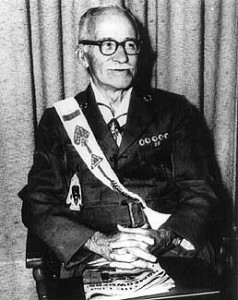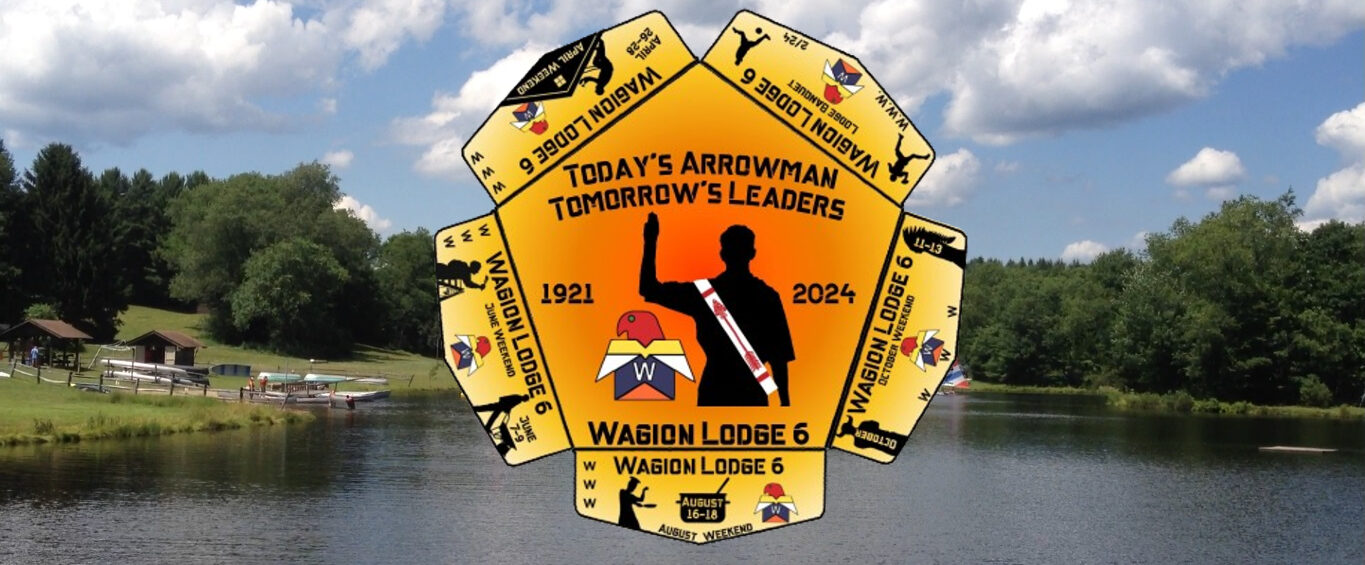 Most Arrowmen hold our Founder in deep regard, but what do you really know about our great founder?
Most Arrowmen hold our Founder in deep regard, but what do you really know about our great founder?
1. Dr. Goodman was an avid musician. In high school, he showed interest in music, playing the piano and violin, and composed a song for his high school senior class. When it was not selected by the class officers, he wrote in his journal of his disappointment. His knowledge of music allowed him to adapt the tune of hymn “God the Omnipotent” and Russian National Anthem “God Save the Tsar” to what we know today as the Song of our Order.
2. Dr. Goodman almost became a journalist. He enjoyed writing and began keeping a detailed journal of daily activities during his senior year of high school, expressing his aspirations for the future along with occasional doubts. With several classmates, he began a literary club and published a newsletter, The Inkstand. In college, he lost interest in this aspiration, but his writing influenced his public speaking skills, which made him the orator we know today.
3. E. Urner Goodman’s holds an Honorary Doctorate in Humanics, although is degrees are in education. Aspiring to a career in education, Goodman enrolled in the Philadelphia School of Pedagogy in 1911. He was selected to be the commencement speaker at his graduation in 1913 and his address was entitled, “The Call to Teach”.Goodman then did graduate work in education at Temple University, while teaching at the Potter School in Philadelphia. It was the love teaching youth that would bring Dr. Goodman to scouting.
4. Goodman was a devout Presbyterian Christian. Goodman took an early interest in church activities as a youth, participating in a boys’ brotherhood group and Sunday school and becoming a member of Tioga Presbyterian Church at age 14. In that year, he dedicated his life to Christ, an event he described as “the most important step I ever took or ever will take in my life.”Just barely out of his teens, Goodman became a popular and highly respected Sunday school teacher and led the Philadelphia chapter of a young men’s group called the Brotherhood of Andrew and Philip. Much later, following his retirement from professional Scouting, Goodman served the National Council of Churches (NCC) during 1951–1954 as the NCC’s first general director of the United Church Men, a laymen’s program he formed to strengthen men’s ties to local churches and their communities.
5. E. Urner Goodman served in WWI. Not suprisingly, Goodman paused his professional Scouting career during World War I, when he was drafted into the U.S. Army shortly after his promotion to Scout executive. He served in the infantry as a first lieutenant, but his unit was never sent overseas. In December 1918, he was discharged from the Army and resumed his professional career as Scout executive in Philadelphia. His service and military expertise carry over in our Order’s philosophy and tradition.
6. Dr. Goodman was a member of many organizations. Aside from the BSA, OA, NCC, brotherhood of Andrew and Philip, Presbyterian Church, and Army, he was a member of Kiwanis, Rotary International, and a Freemason, joining Robert A. Lamberton Lodge No. 487, Free and Accepted Masons of Philadelphia on March 5, 1918.
He holds numerous honors and awards. Upon his retirement from full-time professional Scouting in 1951, Goodman was awarded an honorary Doctorate in Humanics from Missouri Valley College, the first such degree awarded by the college. He was also honored in 1947 when he was made an honorary chief of the Blackfoot Tribe of American Indians and given the name “Chief Eagle”. Maintaining his lifelong interest in music, Goodman was active in the Hymn Society of America in the 1960s and 1970s, and three hymns he composed were published: “Christ Calls Men”, “As Within the Pillared Temple”, and “O God of Love, Who Gavest Life.” The National Lodge presented Goodman with a medal in 1930 formally recognizing him as founder. In 1940, the National Lodge presented him with the first Distinguished Service Award on the OA’s 25th anniversary. Additionally, he was the first Vigil Honor Member in the Order of the Areow, a Silver Buffalo Award Recipient, and Honorary Brother of Alpha Phi Omega. All of these influenced his modeling of the OA.
Delving deeper in the true man of Dr. E. Urner Goodman reveals why we refer such an interesting man that set forth in us the same dream he lived.
